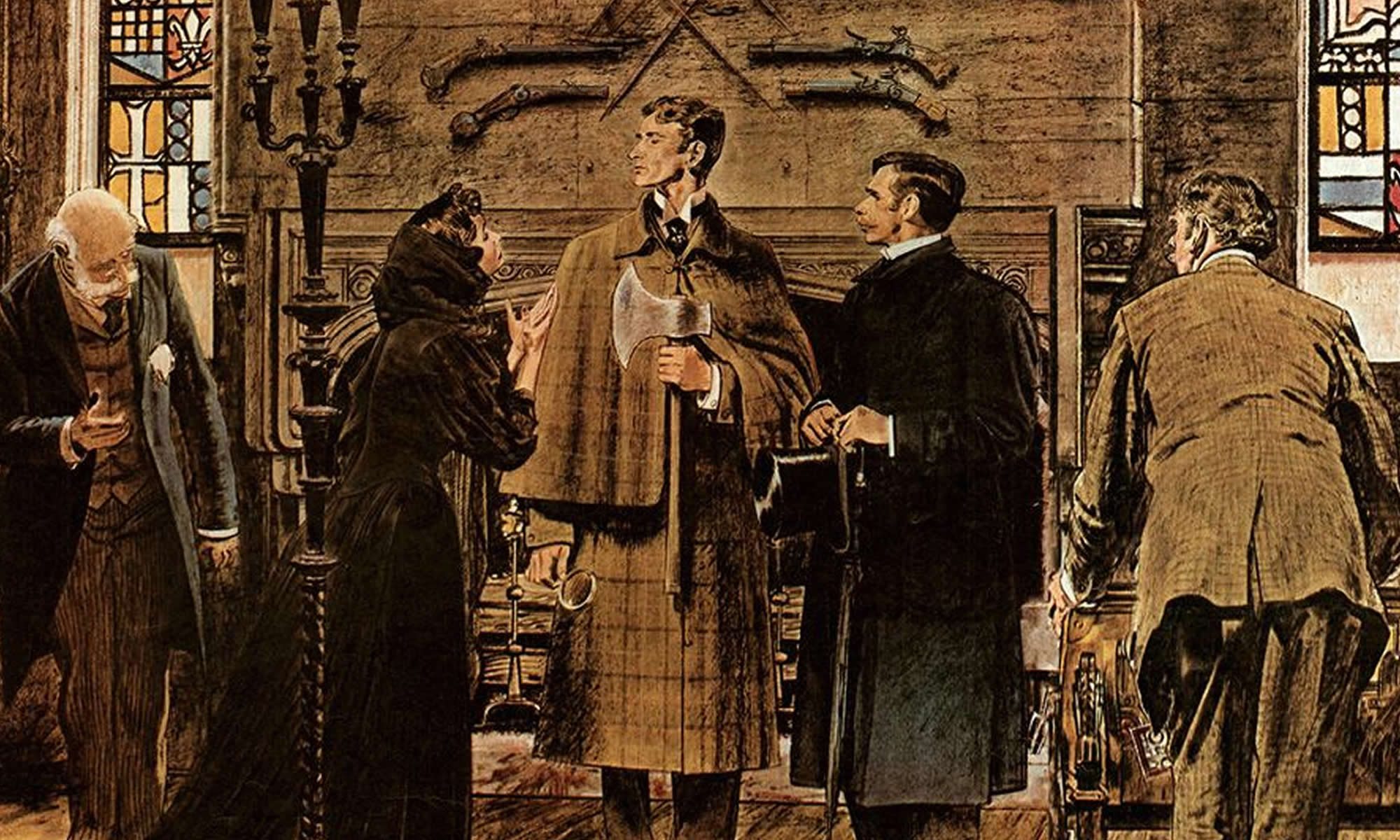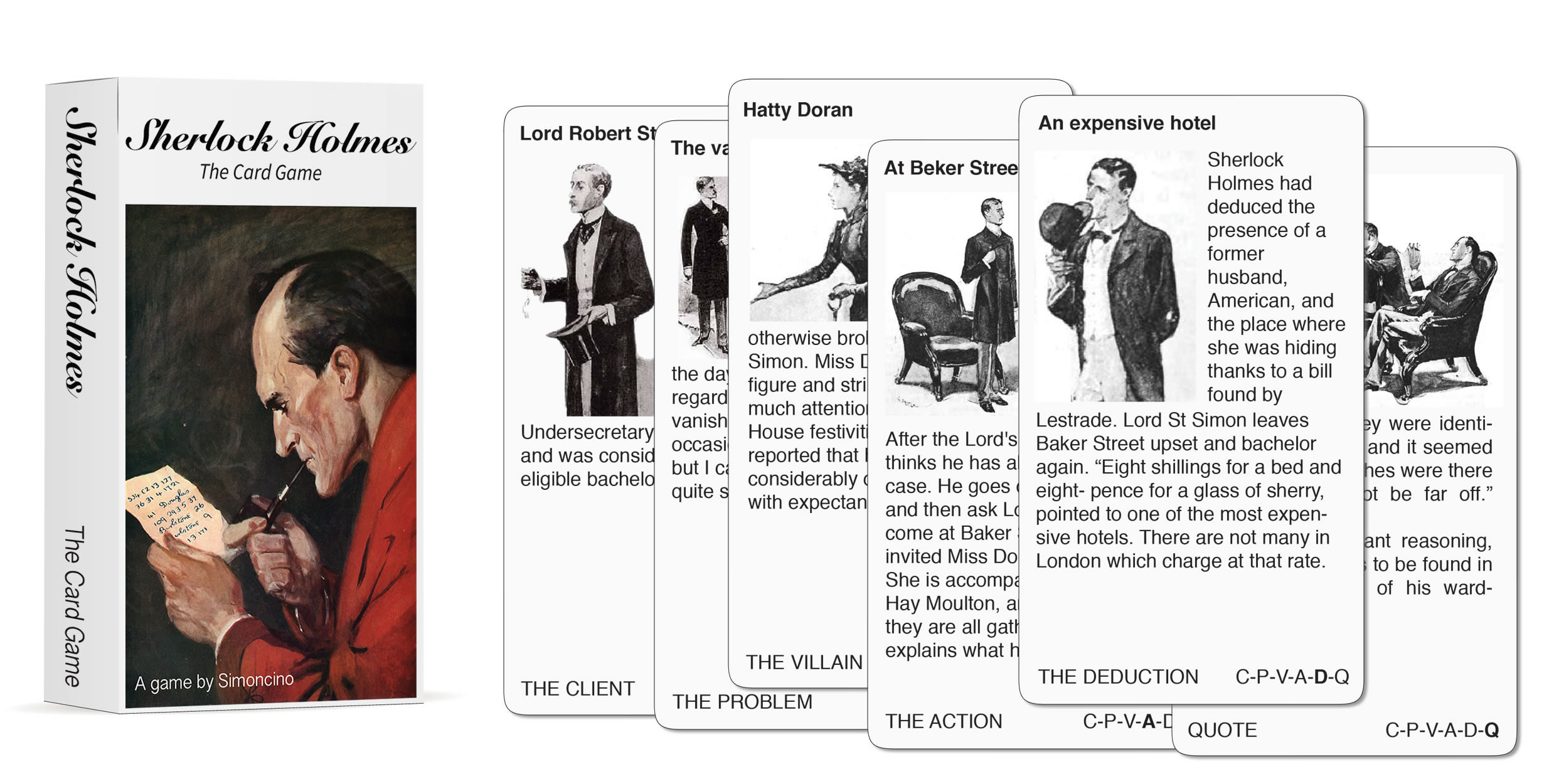With illustrations from the original novels, this card game is designed to evoke the feeling of the original Sherlock Holmes stories. During his turn, each player draws cards from the main deck and tries to put together all the cards he needs to complete a Sherlock Holmes adventure.
The main deck has all the cards needed to complete the following five stories:
– A Scandal in Bohemia
– The Red-Headed League
– A Case of Identity
– The Adventure of the Noble Bachelor
– The Boscombe Valley Mystery
The plot of each Sherlock Holmes story is organized as a sequence* of the following cards: the Client, the Problem, the Villain, the Action, Deduction and final Quote.
The Client – Sherlock Holmes story will often begin with the appearance of a client.
The Problem – When a client pays a visit to Sherlock Holmes, he or she usually relates to him, in great detail, the full circumstances of the case. This is the client’s statement of the Case, clues are introduced into the story.
The Action – At this point starts the real investigation, with a trip to the site of the crime, during the investigation Sherlock Holmes gather more clues. This often includes the famous floor-walk on hands and knees.
The Deduction – This is the solution of the case with Sherlock Holmes explaining to Watson or to the police his way of reasoning.
The Villain – This is the person responsible for the crime, who is caught or exposed by Sherlock Holmes at the end of the investigation.
The final Quote – The epilogue of almost every story often contains a gnome or quotation from some standard author.
The game is played by distributing 6 cards to each player. During his turn a player gets a card from the table and discard one of his cards. The game ends as soon as one of the players puts together all the cards containing all the different elements belonging to the same story. In the deck there are 40 cards, 30 story cards and 3 special cards depicting Sherlock Holmes, Watson and Mycroft, these three cards have the same function of the Joker. They can be used instead of any missing element card.
* Our list of the different elements explaining the structure of a typical Sherlock Holmes Story it’s a shorter version of the more elaborated analysis by K. Knox in his seminal text Studies in the literature of Sherlock Holmes :
“The first part is the (1) Prooimion, a homely Baker Street scene, with invaluable personal touches, and sometimes a demonstration by the detective. Then follows the first (2) explanation, or Exegesis, that is, the client’s statement of the Case, followed by the (3) Ichneusis, or personal investigation, often including the famous floor-walk on hands and knees. No. 1 is invariable, Nos. 2 and 3 almost always present, Nos. 4, 5, and 6 are less necessary; they include the (4) Anasceue, or refutation on its own merits of the official theory of Scotland Yard; the first (5) Proenusis ( exoterice) which gives a few stray hints to the police, which they never adopt, and the second (6) Promenusis ( esoterice), which adumbrates the true course of the investigation to Watson alone. This is sometimes wrong, as in The Yellow Face. No. (7) is the Exetasis, or further following up of the trail, including the cross-questioning of relatives, dependents, etc., of the corpse (if there is one), visits to the Record Office, and various investigations in an assumed character. No. (8) is the Anagnorisis, in which the criminalj is caught or exposed; No. (9) the second Exegesis, that is to say the criminal’s confession ; No. (10) the Metamenusis, in which Holmes describes what his clues were and how he followed them ; and No. (11) the Epilogos, sometimes comprised in a single sentence. This conclusion is, like the Prooimion, invariable, and often contains a gnome or quotation from some standard author.”





